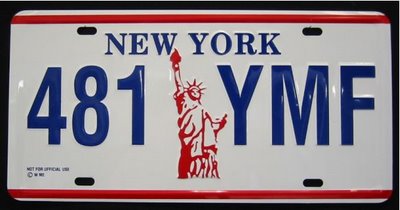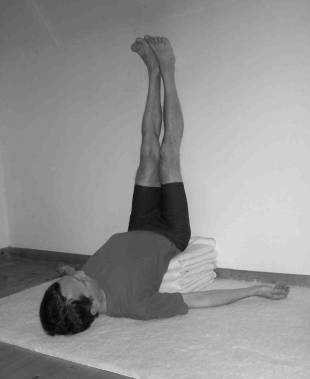Conscious Eating, Yummy!
For me, one of the greatest benefits of yoga is increased awareness.
I remember clearly when my first yoga teacher asked me to be aware of the soles of my feet and the bottom tips of my shoulder blades.
I found that if I paid attention and moved a little, I really could be more aware of those seemingly dark and far-away body parts.
But what really surprised me was my lack of awareness of how unaware I was. Or, as some people say it, "I didn't know what I didn't know."
I still practice yoga today. I think 16 years have gone by. And I'm still uncovering new ways in which I am unaware. I just cruise along, not paying attention. All the time.
One of those times is at the dinner table.
I recently read a suggestion for conscious eating in a book called UltraMetabolism, by Mark Hyman.
I've been doing this practice for over a week now. I really like it. I hope you benefit from it. It's called Kathie Smith's 3/3/3 Technique:
1. Enjoy a moment of gratitude before you begin eating.
2. Take three relaxing deep breaths to the count of three in and three out before you begin eating.
3. During the first few minutes (about three minutes) of your meal, rest your hands in your lap at least three times, taking a relaxing breath with each break. (UltraMetabolism, Hyman, p. 235)
That's it!
It's great. It slows down my whole meal. I get the experience of more choices. I can even choose too eat less!
And I enjoy the meal, and meal-time with my family, even more.
Caution: My wife and daughter both laughed at me, out loud, when I told them I was doing this.
Don't just read about it. Get up. Experience it. Experience yoga!
Kevin Perry
www.ExperienceYoga.org
p.s., The Sanskrit Word of the Day from my previous Daily Yoga Tip was paschima. Paschima means the west side of the body, as in paschimottanasana. The west side of the body refers to the back side. Paschimottanasana means "an intense stretch to the west side of the body pose."
p.p.p.s., Today's Sanskrit Word of the Day is mukha. I'll tell you what it means next time.
p.p.p.p.s., There are only a few weeks left to enroll in our next Experience Sanskrit workshop in Silver Spring, Maryland. Sallie and I will be at Willow Street Yoga on Saturday, August 5 at 1:00 pm. Register here today. We'd love to meet you there.
Copyright 2006. All rights reserved, Mo Yoga LLC.
Kevin Perry
Mo Yoga LLC
1305 Elmerine Ave
Jefferson City, MO 65101
(573) 680-6737
I remember clearly when my first yoga teacher asked me to be aware of the soles of my feet and the bottom tips of my shoulder blades.
I found that if I paid attention and moved a little, I really could be more aware of those seemingly dark and far-away body parts.
But what really surprised me was my lack of awareness of how unaware I was. Or, as some people say it, "I didn't know what I didn't know."
I still practice yoga today. I think 16 years have gone by. And I'm still uncovering new ways in which I am unaware. I just cruise along, not paying attention. All the time.
One of those times is at the dinner table.
I recently read a suggestion for conscious eating in a book called UltraMetabolism, by Mark Hyman.
I've been doing this practice for over a week now. I really like it. I hope you benefit from it. It's called Kathie Smith's 3/3/3 Technique:
1. Enjoy a moment of gratitude before you begin eating.
2. Take three relaxing deep breaths to the count of three in and three out before you begin eating.
3. During the first few minutes (about three minutes) of your meal, rest your hands in your lap at least three times, taking a relaxing breath with each break. (UltraMetabolism, Hyman, p. 235)
That's it!
It's great. It slows down my whole meal. I get the experience of more choices. I can even choose too eat less!
And I enjoy the meal, and meal-time with my family, even more.
Caution: My wife and daughter both laughed at me, out loud, when I told them I was doing this.
Don't just read about it. Get up. Experience it. Experience yoga!
Kevin Perry
www.ExperienceYoga.org
p.s., The Sanskrit Word of the Day from my previous Daily Yoga Tip was paschima. Paschima means the west side of the body, as in paschimottanasana. The west side of the body refers to the back side. Paschimottanasana means "an intense stretch to the west side of the body pose."
p.p.p.s., Today's Sanskrit Word of the Day is mukha. I'll tell you what it means next time.
p.p.p.p.s., There are only a few weeks left to enroll in our next Experience Sanskrit workshop in Silver Spring, Maryland. Sallie and I will be at Willow Street Yoga on Saturday, August 5 at 1:00 pm. Register here today. We'd love to meet you there.
Copyright 2006. All rights reserved, Mo Yoga LLC.
Kevin Perry
Mo Yoga LLC
1305 Elmerine Ave
Jefferson City, MO 65101
(573) 680-6737




